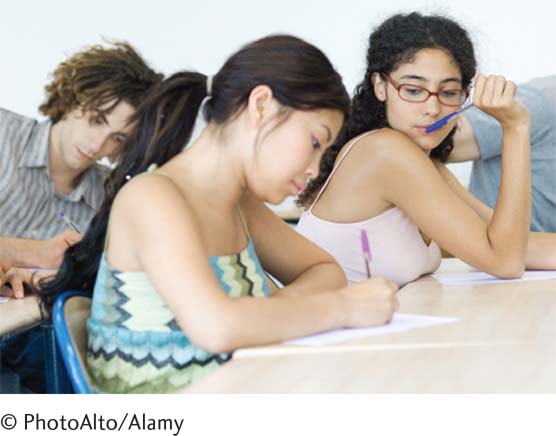Chapter 13 Introduction
CHAPTER 13
Correlation
The Characteristics of Correlation
Correlation Is Not Causation
Calculating the Pearson Correlation Coefficient
Hypothesis Testing with the Pearson Correlation Coefficient
Reliability
Validity
BEFORE YOU GO ON
You should know the difference between correlational research and experimental research (Chapter 1).
You should understand how to calculate the deviations of scores from a mean (Chapter 4).
You should understand the concept of sum of squares (Chapter 4).
You should understand the six steps of hypothesis testing (Chapter 7).
You should understand the concept of effect size (Chapter 8).

John Snow’s map of the London cholera epidemic (Chapter 1) revealed a correlation, a systematic association (or relation) between two variables. Researchers from the Massachusetts Institute of Technology (MIT) used a correlation to reveal the dangers of academic cheating (Palazzo, Lee, Warnakulasooriya, & Pritchard, 2010). They compared the final exam scores of 428 physics students with how frequently they had copied computerized homework assignments from classmates. They assumed that the minority of students who finished their homework within a ridiculously short time—
What might be going on here? Students’ preexisting abilities in math and physics were not correlated with cheating, so these were not weak students who were also incompetent at cheating. Their computerized homework revealed a correlation that suggested another possible answer: Cheaters procrastinated by starting their homework too late to complete it without cheating. Did they have outside jobs, suffer from anxiety, or have other commitments that cut into homework time? Correlations can’t tell us which explanation is right, but they can force us to think about the possible explanations.
This chapter demonstrates how to (a) assess the direction and size of a correlation, (b) identify limitations of correlation, and (c) calculate the most common form of correlation: r, the Pearson correlation coefficient. We then use the six steps of hypothesis testing to determine whether a correlation is statistically significant.